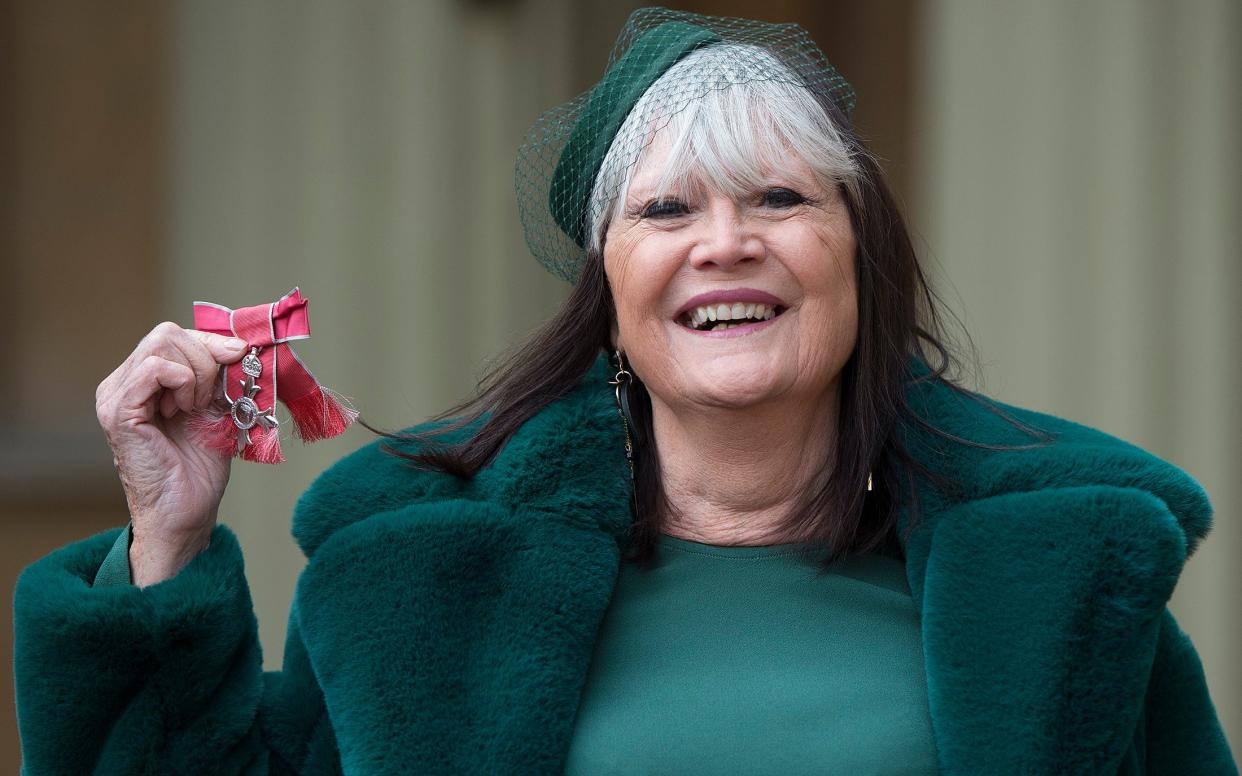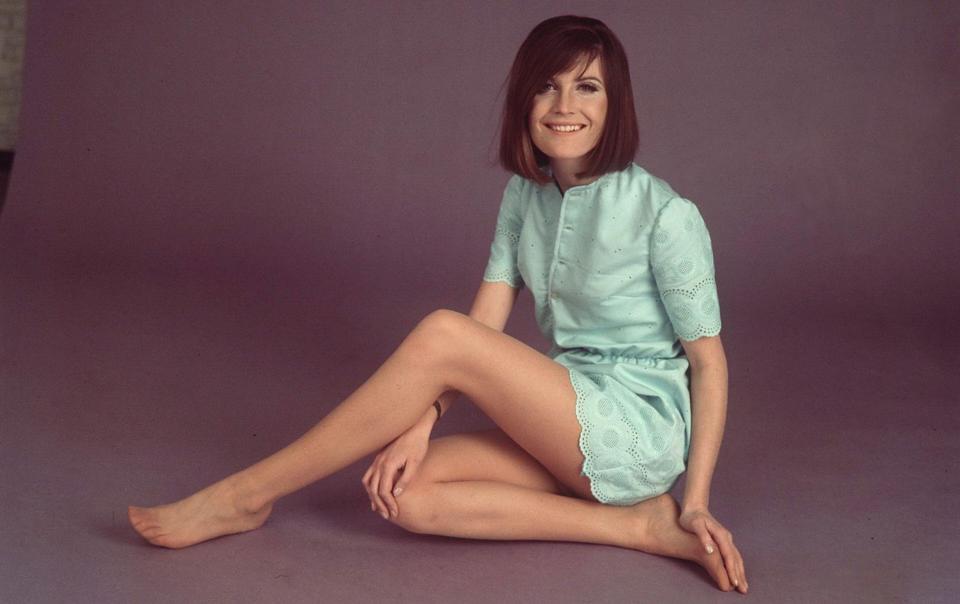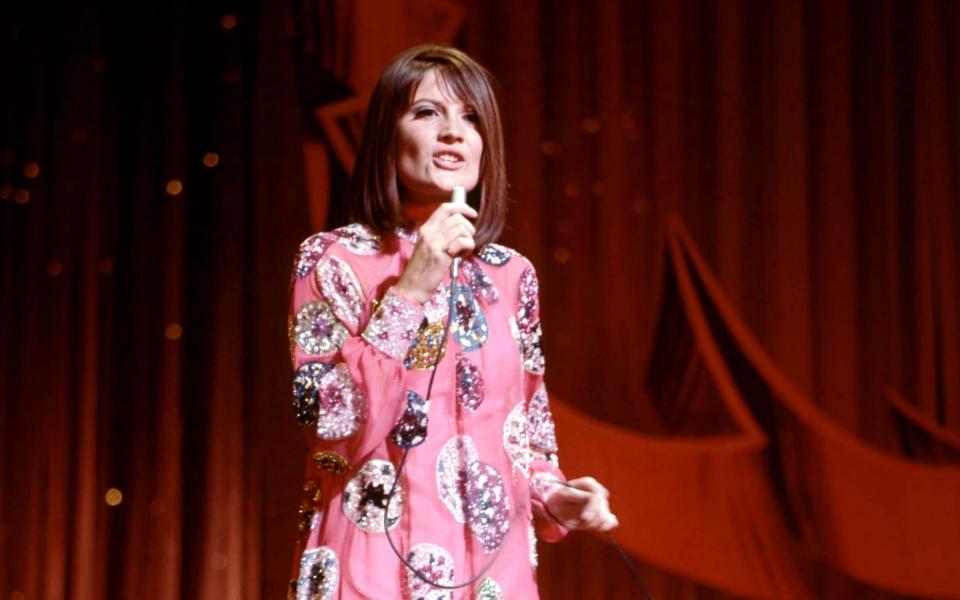Sandie Shaw: ‘Sing barefoot for the Queen? Only if Ed Sheeran does’

As she takes her place in the choir of “national treasures” alongside Ed Sheeran on Sunday to sing the National Anthem in the grand finale to the Platinum Jubilee Pageant, the chances are that many viewers will immediately glance down at pop star Sandie Shaw’s feet. She is almost as well known for performing barefoot as she is for her three number-one singles, including Britain’s first ever Eurovision winner, Puppet on a String.
Is she going shoeless? “If Ed Sheeran does, I will,” she replies with a mischievous grin. “And if it was good enough for The Smiths to go barefoot with me, when they backed me on Top of the Pops, it is surely good enough for Ed.” For someone who hasn’t sung in public for almost nine years – she announced in 2013 at the end of a tour with Jools Holland that she was retiring to focus on her work as a psychotherapist – 75-year-old Shaw didn’t pause when the call came to join the Jubilee Pageant on a high note. “I said, ‘of course’. I’ve loved the Queen since I was a little girl. She is part of my DNA.”
Shaw was just six when she went to her first Royal street party in her home town of Dagenham, Essex. “It was in 1953 to celebrate the Coronation. Everyone was in fancy dress. My dad had bought me a tricycle for my birthday and he then made this huge crown that went over it on a frame. It was all sparkly. I went as the Queen’s crown.”

She grew up – as Sandra Goodrich – on children’s books about the Royals. “They were beautiful picture books. I still have them.” And, after she was catapulted to the top of the charts in 1964 at the age of just 16 after being spotted in a local talent competition by singer Adam Faith, Shaw’s enduring status as a star of Swinging London has meant she has met Her Majesty in person on several occasions. “The Queen is just such a darling,” she says. “I am a huge fan.”
Shaw’s east London accent is still unmistakable, though for the past five years she has been living in “deepest” Oxfordshire, renovating and rewilding an old mill house, which she shares with her third husband, fellow psychotherapist Tony Bedford. If fame and fortune hadn’t come her way, Shaw might have been one of the ardent monarchists camping out on the Mall this weekend. Instead, along with other big names representing each decade of the Queen’s reign, she will sit on a special grandstand to watch the four-act pageant process pass before she goes up on stage to add her voice to the tributes.
Shaw already has her outfit ready – a turquoise dress she bought to attend her daughter’s beach wedding (she has three children, one with her first husband, fashion designer Jeff Banks, and two with her second, Virgin co-founder Nik Powell). “Then she decided she was going to get married on her own. So I’ve never worn it. It’s very Caribbean.”
As a fellow keen environmentalist, Prince Charles would surely approve of her recycling of an outfit. They have met before, including in 2017 when he presented her with an MBE for services to music. “I also sang for him once, at a Cambridge University ball when he was a student there.” When their paths cross nowadays at events, she says, they talk about trees. “We both love them.”

When her pop career tapered off in the 1970s, Shaw tried her hand as an actress, playing Ophelia in a production of Hamlet. Then her world came crashing down in 1978 when Banks’ business ventures left them penniless: after they split, she lived in a caravan and worked as a waitress. By the mid-1980s, she had bounced back, working with the band of the moment, The Smiths, whose lead singer Morrissey declared himself “an incurable Sandie Shaw fan”.
She then switched to writing and published an autobiography in 1991, The World At My Feet. Next, she retrained as a psychotherapist, setting up the Arts Clinic in premises close to London’s Harley Street, working with entertainers whose careers were taking a toll on their mental health. “The creative industry is rife with mental health problems,” she reflects. “Being famous from a very young age takes a toll on your personal development. It can distort your views of reality and your ideas about yourself. As you get older, you have to readjust those ideas to others.”
Women in a male-dominated music industry have it tough. “I had to learn how to navigate my way through all that. I do mentoring now with young women singers. I really missed having someone who was looking out for me.”
Did she ever feel exploited? She has, in the past, talked about her reluctant involvement in the 1967 Eurovision Song Contest, which she described as “crap”. “I never let anybody take advantage of me,” she insists. “I’ve been a feminist since before they invented the word. My dad always used to say to me: ‘You’re as good as any man’.”
She is thankful that she isn’t a young singer now. “You have to do social media to get on. It must be absolutely exhausting to make your life into an advertisement. Social media isn’t any part of your creative activity. It doesn’t give you any space to have your fallow periods. No one can be present all the time.”
As well as singing and psychotherapy, she lists “music activism” as the third pillar in her working life. She was on the board of the Featured Artists Coalition, established to give musicians more rights over their output, and won her own long-running battle to establish her copyright over her entire back catalogue. She still feels women get a bad deal. “We have Sir Mick Jagger, Sir Tom Jones, Sir Rod Stewart, Sir Elton John. Is there, or was there, a Dame Cilla [Black], a Dame Dusty [Springfield], or a Dame Lulu? These women were around long enough. They served the country. What have the men done that the women haven’t? It is outrageous.”

She doesn’t have a damehood yet, but someone in the Palace seems to rate her. “Whenever there is a big celebration of the Queen, I’m usually invited along. I must be on a list somewhere.” She remembers one reception at Buckingham Palace around the turn of the millennium for people in music. “I spotted Cilla coming up the stairs all on her own. It was just after her husband, Bobby, had died. So, whatever the protocol says, I trotted down and held her hand”.
Together they found Joan Armatrading (“really cool”) and Kate Bush (“wandering around excitedly looking at the art”). “And then we were gathered in a huddle together when the Queen came over to talk to us about music. She is so patient. I don’t know how she does it.” Her Majesty also taught Shaw a handy lesson. “When she is introduced to people, she often says, ‘What are you doing at the moment?’ It’s such a clever opening line and one I’ve used ever since when I’ve had to work a room. Except that I say, ‘What you up to?’”
Shaw is excited about the pageant, with 6,000 people from all corners of the Commonwealth, plus 200 horses, a dragon puppet the size of a double-decker bus, a Bollywood take on the Queen’s wedding, artists from the Notting Hill Carnival and even a drag queen playing Her Majesty. “The concept of us all gathering and celebrating diversity is very of-the-moment,” she says. “The pageant is us being enriched as we open up a bit more as a society. The soft-power these events give us is really important to this country. What amazing creativity. That really impresses the rest of the world.”
Shaw has practised Buddhism for 46 years, and it helps her find the process of ageing fascinating. “As a Buddhist, I am aware that everything is changing all the time, but now it is manifesting itself in my physical form.” She discusses these changes with female friends. “My mum would never have done that. There were lots of lady secrets that they never told us. Take the menopause. Nobody mentioned it to anybody, ever, back in the day.”
One thing about growing older, she suggests, is being drawn back to your roots. “Last week, I was made a Freewoman of Barking and Dagenham. I couldn’t stop crying when I got up for my award, saying ‘I’m so glad to be home’. At my age, you start reconnecting with the essence of who you are. You understand how those youthful experiences, and values, shape you through your life.” Right back to dressing up as the Queen’s crown for her first ever Royal street party in 1953.

 Yahoo News
Yahoo News 
